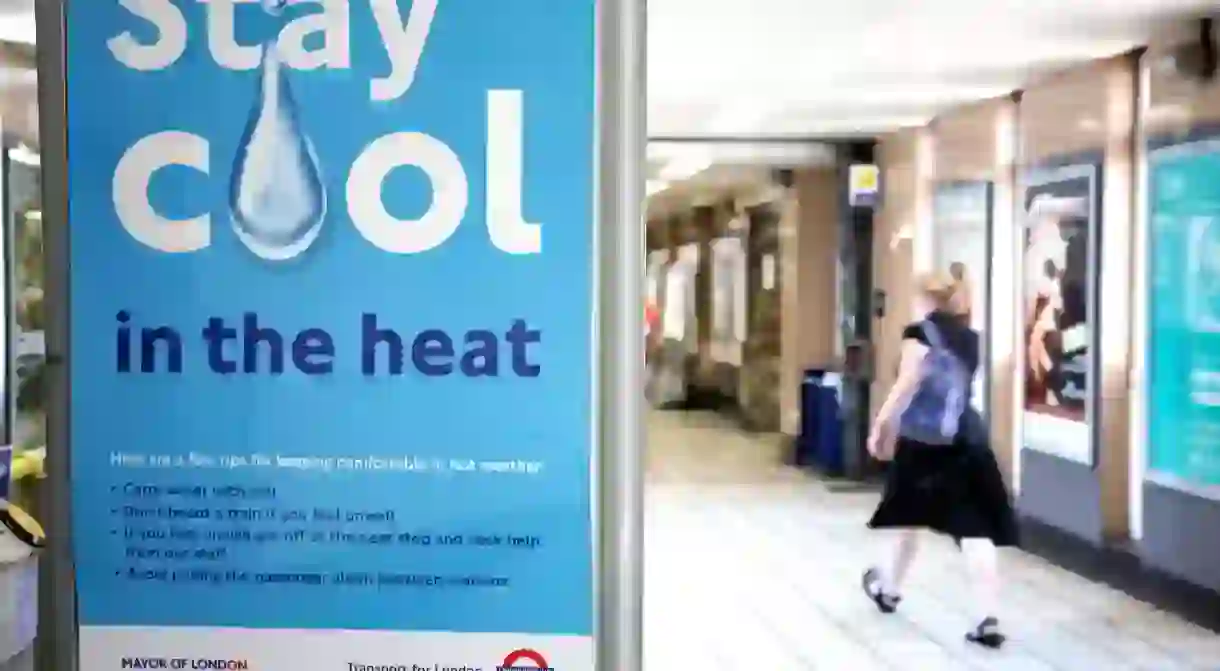Why Is the London Underground a Sweaty Nightmare?

Summer 2018 has been one of London’s warmest in recent memory, and commuters have been suffering with temperatures on the Underground reaching upwards of 30C. Culture Trip looks at the history of the travel network’s construction to find out why the world’s oldest underground railway never seems to cool off.
Packed in like sardines during rush hour, Londoners are tired of their commutes turning into a sauna session. Transport for London (TfL) has announced plans to introduce air conditioning to some lines by 2030 as a part of its Deep Tube Upgrade Programme, but for now commuters will have to continue to surrender to their sweat glands.
According to data from August 2017, the hottest temperatures were recorded on the Bakerloo line, with the Central line a close second.

The lack of temperature control in the deepest lines of the London Underground, also known as the Tube, was not always a source of complaint. When the transit system first opened in 1863, Underground stations were seen as a welcome refuge from summer temperatures. Anyone who has had the pleasure of touring a cave system or a catacomb will know that generally the temperatures below ground stay cool (around 14℃). Why is the Tube different?
The issue is down to the very thing that made it possible to build underground tunnels in the first place: London’s dense clay soil.
The Underground’s earliest lines (Metropolitan, Hammersmith & City, District and Circle) were built using a ‘cut and cover’ method, which creates shallow tunnels that stay relatively temperate throughout the year. After the success of the early lines, London’s city planners decided to expand the Underground and introduce deep-level trains.
On 18 December 1890, the portion of the Northern line from Stockwell to Borough was opened as the first “deep-tube” line. Others include the Central, Piccadilly, Bakerloo, Victoria, Waterloo & City and Jubilee lines. The stations on these lines were made much smaller than their earlier counterparts as the labour involved in their construction was time-consuming and difficult.
At first, “deep-tube” lines didn’t seem to have too much of a temperature regulation problem, but over time more trains were introduced to the system and people began to rely on it for daily transportation. Unfortunately, the heat from the trains and the people using them has caused the clay around the tunnels to heat up.

For lines closer to the surface, this was not much of an issue; heat accumulated underground was able to escape. This is not the case with “deep-tube” lines. The dense clay that surrounds the transit system tends to retain heat, but the clay around the deeper lines can no longer absorb heat, which has resulted in rising temperatures in stations and on trains.
This has been an ongoing problem, and a difficult one to solve. In 2003, London’s mayor offered a £100,000 prize for a solution to the excessive heat. While air conditioning seems to be the obvious answer, the narrowness of “deep-tube” tunnels means that air conditioning units cannot be attached to the outside of the trains. Additionally, there is nowhere for hot air to escape to and any heat removed from the trains would be transferred to the platforms.

Luckily, those constructing newer underground systems have learned from past mistakes. The Crossrail line, set to be completed in 2020, will run up to 40m underground and will feature an exhaust system that blows cool air across the tracks as the trains brake, helping to expel heat from the stations via ducts under the platforms.
The Deep Tube Upgrade Programme promises to introduce 250 air-conditioned trains on the Bakerloo, Waterloo & City, Piccadilly and Central lines, but no design for said trains has been finalised, so at this point it remains unclear as to how the cooling systems will work.
In the meantime, maybe TfL should consider handing out fans to help us all out?













